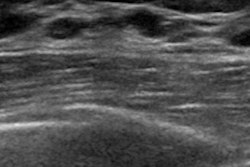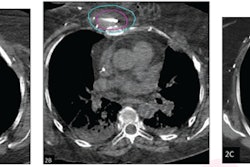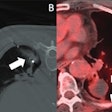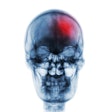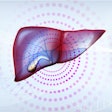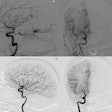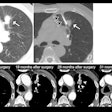Ultrasound-guided cryoablation can be considered for breast cancer patients who are poor surgical candidates or who refuse surgery, suggest findings published February 3 in the Journal of Vascular and Interventional Radiology.
Researchers led by Jolie Jean, MD, from New York-Presbyterian Hospital/Weill Cornell Imaging in New York found a recurrence rate of 10% when following up with women who underwent cryoablation at an average of 21 months after the procedure.
“Breast cryoablation is a minimally invasive technique that represents a reasonable alternative for select patient populations,” Jean and colleagues wrote.
Breast conservation surgery and mastectomy with or without neoadjuvant or adjuvant therapy are the standard of care in breast cancer treatment. However, not all women make for good surgical candidates for these treatment methods. Furthermore, some women refuse surgery, which may force clinicians to consider alternative treatment options.
Cryoablation is one such alternative that has gained momentum in recent years. Previous studies show that this method can successfully treat breast tumors up to 1.5 cm and be performed safely. Still, the researchers noted a lack of data on outcomes for women with a wider range of breast cancer subtypes and sizes.
Jean and co-authors described the recurrence rate and safety after cryoablation of primary breast cancer in women who were either poor surgical candidates or refused surgery. They also examined these trends over a range of pathologic breast cancer subtypes and sizes.
The study included 60 women who were treated via ultrasound-guided cryoablation between 2018 and 2023. Of the total women, 45 had invasive ductal carcinoma, six had invasive lobular carcinoma, two had multicentric ductal carcinoma in situ (DCIS), and seven had other histology. Tumor size ranged from 0.3 cm to 9 cm, with an average of 2.7 cm.
The women had an average follow-up of 21 months and a median of 9.8 months. The team observed a recurrence rate of 10% (n = 6).
Compared with women with no recurrence, women in the recurrence group had more poorly differentiated disease (66.7% vs. 22.2%, p = 0.038). Tumor size did not differ between nonrecurrence and recurrence groups. While the nonrecurrence group had an average of 2.7 cm, the recurrence group had an average of 2.5 cm (p = 0.506).
The researchers also observed a significant age difference between women who were treated with palliative intent (79.7 years) rather than curative intent (72.5 years, p = 0.032).
Finally, four women experienced skin injuries with blistering due to the ice ball formed through the procedure. The researchers noted that all recovered within one to two weeks through conservative management using silver sulfadiazine.
With these results in mind, the study authors highlighted cryoablation as a “promising” treatment alternative for these women.
The study can be accessed in its entirety here.




